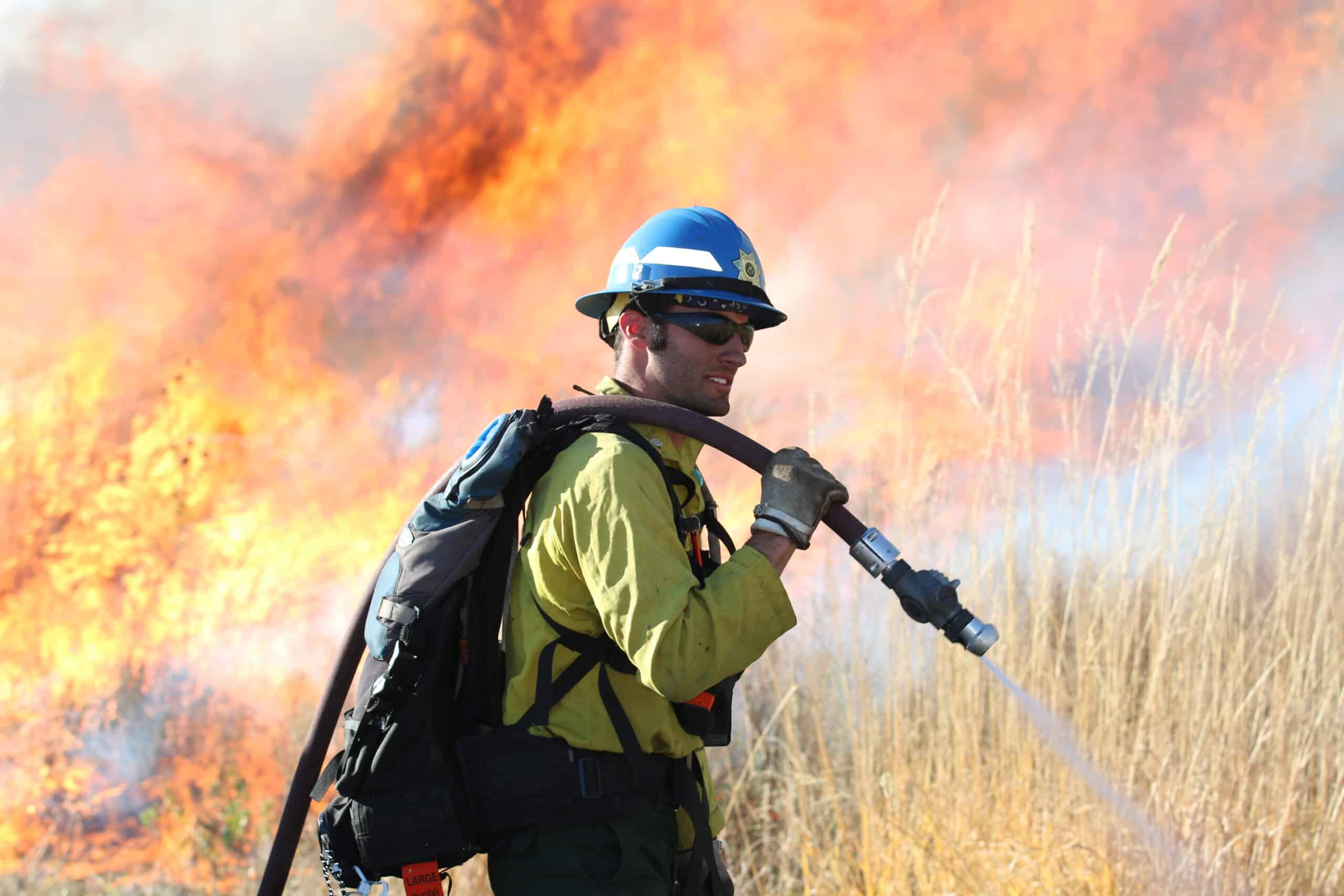The red-orange fingers of fire are rarely a welcome sight – especially when they’re racing across precious landscapes and threatening homes and communities – but there are times when fire is one of the most useful tools we have to maintain and preserve the health of ecosystems. While it may seem counterintuitive, planned ignition – otherwise known as prescribed fire – has long been used to keep grasslands healthy. However, the use of fire as a tool to manage grasslands far predates its use by the Service.
Native Americans have had a close relationship with fire for millennia. Many different groups of Indigenous peoples used various techniques of what we now call prescribed fire to maintain landscapes across the continent. By purposefully burning areas at specific times and intensities, they were able to produce habitat for species they preferred, sustain the long-term health of this land for thousands of years, and prevent the massive wildfires we see today.
The Ecological Benefits of Fire
Some landscapes need fire to survive. Prescribed fires remove excess fuels from the landscape, which plays a major role in nutrient cycling. Fire can also be a catalyst for important changes by removing invasive plants, restoring natural habitats, and contributing to the natural carbon cycle.
By using prescribed fires, land and fire managers can safely store nutrients in the soil while propagating seed dispersal of native plants, which, in turn, allows native species like prairie wildflowers and even carnivorous plants to flourish. Greg Kramos, a private lands biologist for the U.S. Fish and Wildlife Service (Service), says that some shorebirds, such as upland sandpipers, need wildfire to clear invasive trees from tallgrass prairies in America’s Great Plains. “No fire, no upland sandpipers,” he says.
The Threat of Encroachment
Throughout the Central Grasslands, the spread of invasive species – including non-native grasses, weedy forbs, trees, and shrubs – is threatening the balance and future of this critical ecosystem. As a result of these invasive species, as well as land conversion, approximately 62% of the native grassland biome in North America has been lost, which has contributed to a 53% reduction in grassland bird populations since 1970 —more than 720 million birds.
Like the Indigenous stewards long before them, the Service’s land managers understand the natural solution that fire provides to keep the grass in grasslands. Woody plant encroachment, a term used to describe the expansion of trees and shrubs into native grasslands, is a serious threat for the Central Grasslands, and it is a threat that is concerning scientists and land managers across the country. While some woody growth can have cultural or economic value, what we are referring to here is the large-scale expansion of woody growth into grasslands.
The idea that trees could be invasive may seem surprising or counterintuitive – indeed, planting trees can be a significant and inspiring action for citizens wanting to care for the earth – but just as forests play an important ecological role, so too do grasslands. Thousands of species are native to these grassy habitats, and when native habitat disappears, the plants, animals, and insects that live there disappear, too. It is imperative that our remaining grasslands are conserved for the sake of the life that flourishes on this landscape.
Social Acceptance of Fire
Support for fire culture isn’t universally accepted across the Central Grasslands. In fact, there are many places in the Central Grasslands where the use of fire as a land management tool is generally dismissed. There are partners, NGOs, and stewards of the land working to change this narrative through landowner-led social change, however, they often face resistance both from their peers, as well as from the organizations that control funding.
“Prescribed burning for fuels reduction often receives greater funding compared to ecosystem restoration or land management,” says Dirac Twidwell, professor and rangeland ecologist with the University of Nebraska-Lincoln’s large-scale rangeland conservation lab, and science advisor for Working Lands for Wildlife, an approach of USDA’s Natural Resources Conservation Service (NRCS). “But fuels reduction without ecosystem management is a reactive – albeit important – approach that fails to prevent the build-up of volatile fuels. Instead, the full value of prescribed fire occurs when it is a long-term fixture to manage ecosystems. This is when we see land management actions mitigate several large-scale problems resulting from woody encroachment in grasslands, including heightened wildfire danger, loss of forage production, the collapse of grassland wildlife, reduced water quantity and quality, increased vector-borne disease risk and even reduced public school funding. It is extraordinarily difficult to restore these ecosystem services at large scales, and this is why we continue to see more grassroots efforts to restore fire as a critical ecosystem process early-on and before these types of problems occur.”
David Toledo, Rangeland Management Specialist with the Agricultural Research Service of the U.S. Department of Agriculture, believes the solution to this problem may have more to do with community than it does with risk. More specifically, in a paper published in 2013, he and his colleagues suggested that Prescribed Burn Associations (PBA) play a bigger role in social acceptance than previously thought. Barriers like lack of skill, knowledge, and access to equipment may be a significant source of landowner resistance to fire as a management tool. However, PBAs can help landowners overcome these barriers. It is the hope of many conservationists in the Central Grasslands that increasing access to education, training, and resources will enable fire culture to take root and grow in these places where it is needed most.
This story was excerpted from Using Fire to Manage Grasslands published by the US Fish and Wildlife Service on May 28, 2024. Read the full story here. Photo Credit: Steve Segin/USFWS.

